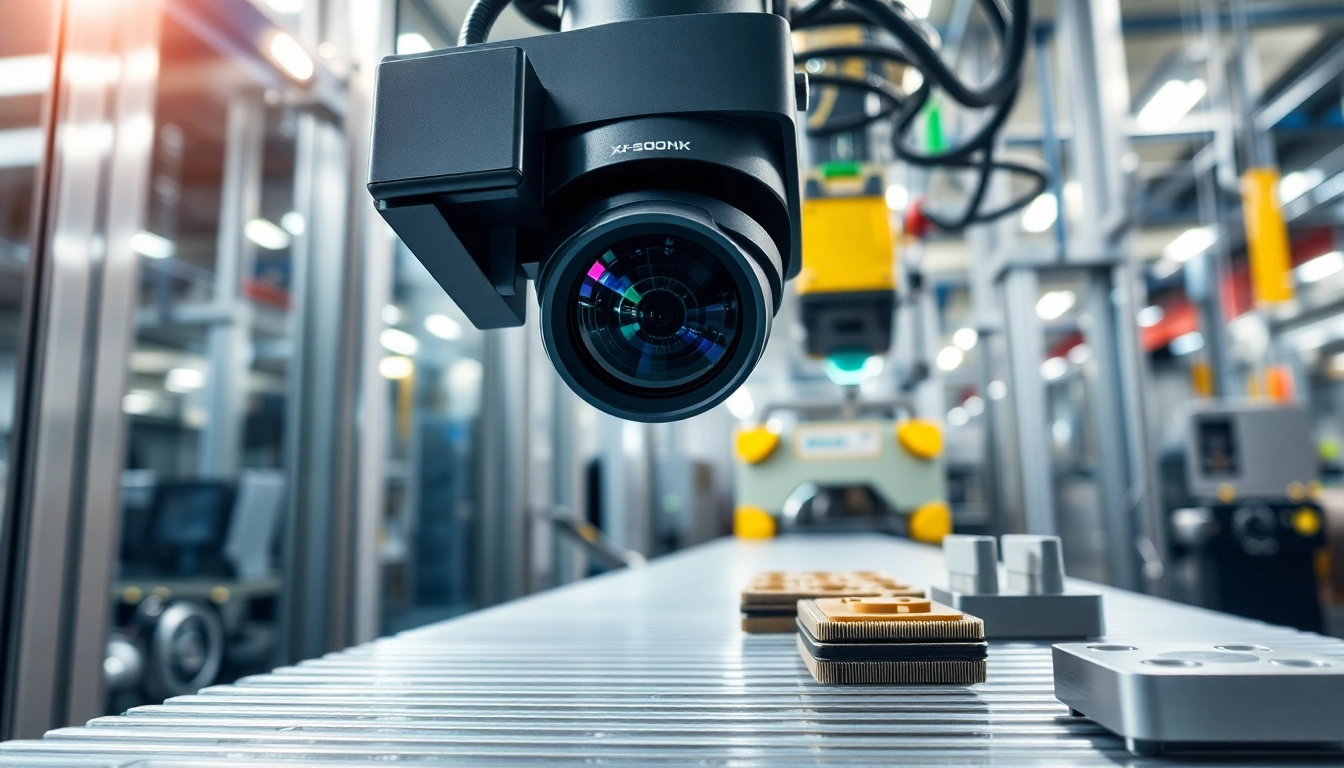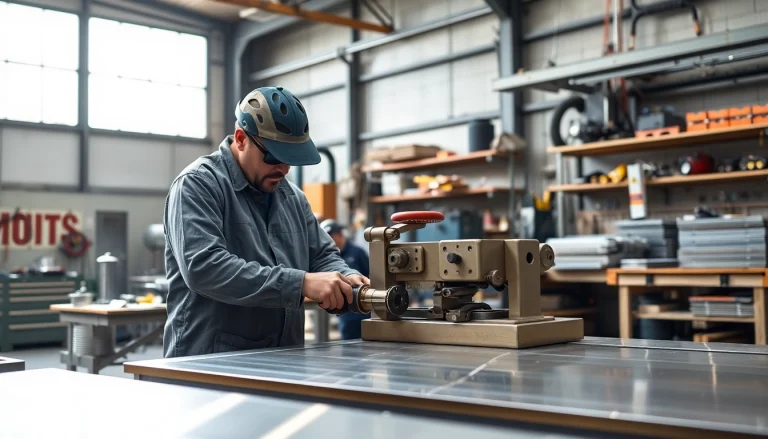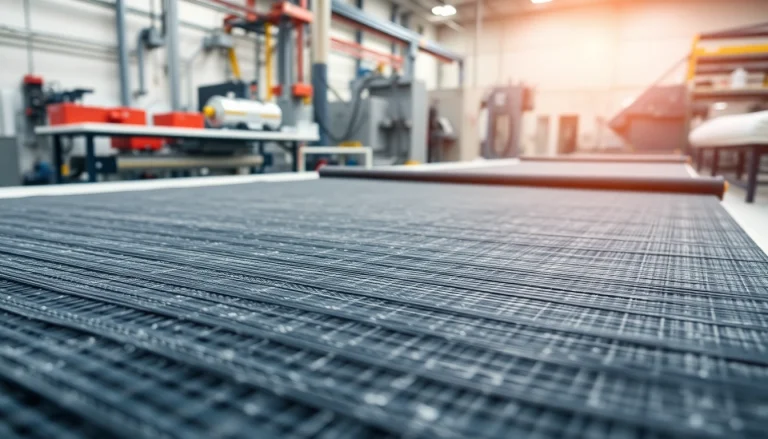1. Introduction to Machine Vision
1.1 What is Machine Vision?
Machine vision is an interdisciplinary field that involves the use of cameras and computer algorithms to interpret visual information derived from the physical world. Essentially, it enables machines to ‘see’ and analyze images to perform various tasks, such as quality inspections, measurements, and automated control systems. This technology relies on a combination of image processing, computer vision, and artificial intelligence. Through machine vision, industries can achieve greater efficiency, reliability, and accuracy in their operations.
1.2 Brief History and Evolution
The history of machine vision dates back to the 1960s when the first rudimentary systems were developed for basic inspection tasks. As technology progressed, the development of more sophisticated algorithms and the advancement in optics and digital imaging greatly enhanced machine vision capabilities. In the late 20th century, machine vision systems shifted from standalone devices to integrated solutions that work alongside other factory automation and robotics. Today, machine vision solutions can be found in diverse industries, from automotive production lines to healthcare facilities, reflecting their evolution from simple inspection systems to complex, intelligent decision-making tools.
1.3 Importance in Modern Industry
In today’s competitive landscape, machine vision is crucial for increasing productivity and ensuring quality standards. By offering real-time inspection and data aggregation, machine vision systems minimize human error, enhance throughput, and improve product consistency. They are employed in various applications, such as defect detection, assembly verification, and even serving in automated guided vehicles (AGVs). The integration of machine vision technology has proven to be a game-changer in sectors like manufacturing, agriculture, and retail, paving the way for smarter supply chains and enhanced operational efficiency.
2. Core Technologies Behind Machine Vision
2.1 Cameras and Sensors in Machine Vision
Cameras and sensors are the backbone of any machine vision system. They serve as the eyes of the system, capturing visual data from the environment. Various types of cameras are available, including CCD (Charge Coupled Device) cameras known for their high-quality image capture, and CMOS (Complementary Metal-Oxide-Semiconductor) sensors, which are popular for their lower cost and power consumption.
The choice of camera often depends on the specific requirements of the task at hand—such as resolution, light sensitivity, and frame rate. Moreover, the integration of 3D cameras has enabled more complex applications, such as spatial measurement and depth perception, thus broadening the scope of machine vision into areas like robotics and autonomous navigation.
2.2 Integrated Software and Algorithms
Behind every machine vision system lies sophisticated software that processes the captured images and extracts meaningful data. Image processing algorithms are used to filter, enhance, and analyze the images, facilitating tasks such as pattern recognition, edge detection, and feature extraction. Common algorithms used in machine vision include convolutional neural networks (CNNs), which have revolutionized the field by providing highly accurate image classification and detection capabilities.
This software generally allows for customizable workflows where users can define criteria for inspections and parameters for image processing. The integration of machine learning algorithms enables machine vision systems to improve over time, adapting to changes in production processes and evolving to handle more complex tasks.
2.3 Lighting and Optical Considerations
Lighting plays a critical role in machine vision, affecting the quality and usability of captured images. The type of lighting used can dramatically influence the outcome of inspections, as proper illumination enhances image contrast and minimizes shadows. Different lighting techniques such as backlighting, diffuse lighting, and structured light systems can be employed based on the application requirements.
Optical considerations, such as lens choice and camera positioning, are also essential for ensuring that the machine vision system can effectively capture the necessary details for analyses.
3. Applications of Machine Vision
3.1 Quality Control and Inspection
Quality control is one of the most prevalent applications of machine vision in modern industries. By automating inspection tasks, machine vision systems can accurately identify defects in products, ensuring that only items meeting quality criteria proceed through the production process. Common applications include checking for missing components, verifying labels, and scanning barcodes. This not only saves time and labor costs but also enhances the overall quality of the produced goods.
3.2 Robotics and Automated Systems
Machine vision plays a pivotal role in robotics, particularly in applications requiring navigation and object recognition. For instance, autonomous robots equipped with vision systems can locate, pick, and place items without human intervention. In warehouses and fulfillment centers, machine vision-guided robots optimize logistics by accurately identifying and sorting products based on their attributes.
3.3 Data Acquisition and Analysis
Machine vision systems also excel in data acquisition and analysis. By continuously monitoring operations, they collect vast amounts of visual data, which can be analyzed to improve processes and predict failures. This capability allows organizations to transition from reactive to proactive maintenance strategies, minimizing downtime and maximizing efficiency in production environments. Advanced machine learning algorithms can further analyze this data to identify trends, enabling informed decision-making and operational adjustments.
4. Machine Vision vs Computer Vision
4.1 Key Differences Explained
Machine vision and computer vision, though often used interchangeably, serve distinct purposes. Machine vision is primarily focused on automated inspection and process control within industrial settings, utilizing visual data for operational efficiency. On the other hand, computer vision encompasses a broader scope, including applications like image recognition and surveillance in non-industrial contexts. While both fields utilize algorithms and similar technologies, the key difference lies in their application—machine vision is typically task-oriented, while computer vision is more about understanding and interpreting visual data.
4.2 Shared Technologies and Techniques
Despite their differences, machine vision and computer vision share a foundation of technologies and methodologies. Both rely on image processing and machine learning algorithms to manipulate and analyze visual data. Techniques such as convolutional neural networks (CNNs) are fundamental in both fields, enabling advanced functionalities like object detection and facial recognition. As such, innovations in one domain often benefit the other, creating a cycle of technological advancement.
4.3 Use Cases in Different Industries
In industrial settings, machine vision is frequently utilized in manufacturing for quality assurance, while computer vision may be more prevalent in sectors such as healthcare for diagnosing medical images or retail for facial recognition applications. Each industry is continually discovering new ways to apply these technologies to improve operational efficiency and provide better services to customers.
5. Future Trends and Challenges in Machine Vision
5.1 Innovations on the Horizon
The field of machine vision is consistently evolving, with several innovations on the horizon. Upcoming advancements in AI and deep learning promise to improve the accuracy of image recognition and expand the scope of applications beyond traditional inspections. Integration with the Internet of Things (IoT) will likely enhance data sharing among machines, enabling real-time analysis and decision-making linked to larger smart factory concepts.
5.2 Addressing Current Limitations
Despite its benefits, the deployment of machine vision does face challenges. Current systems can be limited by variations in the environment, such as changes in lighting or unexpected obstructions. Ensuring robustness across varied conditions requires the development of adaptive algorithms that can adjust to different scenarios seamlessly. Additionally, the high initial cost of implementation remains a barrier for many small to medium-sized enterprises.
5.3 The Role of AI and Machine Learning
Artificial intelligence and machine learning are set to play a transformative role in the future of machine vision. These technologies can enhance the ability of machine vision systems to learn from data and improve their performance over time. The shift towards AI-powered systems allows for the handling of complex tasks that require advanced decision-making capabilities, paving the way for further innovations in automation and smart manufacturing.








